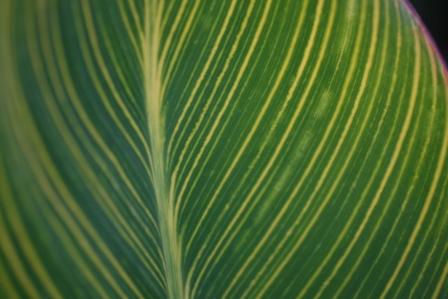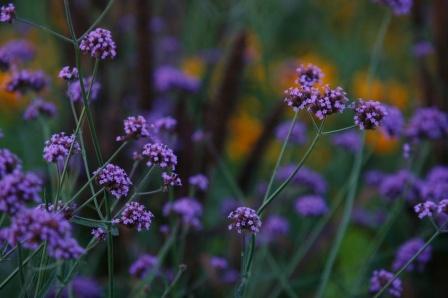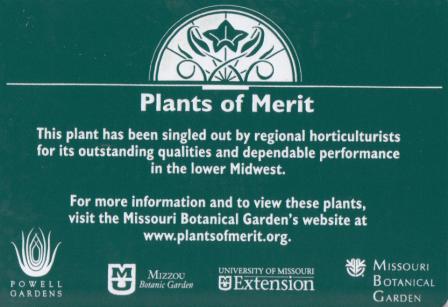A couple of weeks ago in my post Shaw’s Garden Celebrates Historic Anniversary, I offered an overview of the Missouri Botanical Garden (MBG) and shared some of my favorite resources. I noted the Plants of Merit (POM) program but did not provide readers with any further detail. It is a program that I sponsor and feel it deserves a post.
I first heard about the program a couple of years ago when a colleague encouraged me to enter the Gardens at the Bank of Springfield in the MBG’s Plant of Merit Garden Recognition Program. Unknowingly, I had used many POM in my design.
According to the MBG web site, the POM program was established in 1998 as an educational effort to increase gardening success for the homeowner. The program centers on a list of regionally (USDA Zone 5 and 6) proven annuals, perennials, shrubs, vines, trees and edible ornamentals. Plants are chosen with the goal of making available to the public a range of plants for diverse settings that are attractive, disease- and pest-tolerant, non-invasive, and have outstanding ornamental value.

Canna (Canna 'Striata')- Plant of Merit, Emeritus
Program sponsors and regional horticultural experts nominate plants for recognition. Judging criteria include increasing landscape plant diversity, minimizing pesticide usage, energy and water conservation and relability with low maintenance. Each year new awardees are selected, past winners earn emeritus status. Currently there are 56 POM on the active list with over 100 “graduates”. For a complete listing click here.
New additions for 2009
- Angelonia (Angelonia angustifolia– Serena Series)
- Egyptian papyrus (Cyperus papyrus ‘King Tut’)
- Mexican petunia (Ruellia brittoniana ‘Purple Showers’)
- Lady fern (Athyrium ‘Ghost’)
- Rattlesnake-master (Eryngium yuccifolium)
- Soft rush (Juncus effusus)
- Summersweet (Clethra alnifolia ‘Ruby Spice’)
- Eastern white pine (Pinus strobus ‘Sea Urchin’)
- Yew (Taxus x media ‘Citation’)
- Hedge maple (Acer campestre)
- Chinkapin oak (Quercus muehlenbergii)
- American linden (Tilia americana ‘Redmond’)
- Red cabbage (Brassica oleracea ‘Ruby Perfection’)

Vervain (Verbena bonariensis)- Plant of Merit, Emeritus
The list is published by a consortium that includes MBG’s Kemper Center for Home Gardening, Powell Gardens in Kansas City, University of Missouri Extension, Mizzou Botanic Gardens, Missouri Landscape & Nursery Association and the Illinois Green Industry Association.
An annual guide listing the POM is widely distributed through the region. And, a network of retail nurseries and garden centers stock the POM and promote the program with customers.

Signage located around the MBG and at participating nurseries identifying POM.
As a landscape professional, I am very proud to support this program. With so many plants for homeowners to choose from, the POM program takes the guess work out of the selection process.
Just for fun, if you could nominate plants from your region for consideration as POM, what would make your short list? Remember to base your selection on the following criteria: easy to grow and maintain, not known to be invasive in your area, resistant or tolerant to disease and insects, have outstanding ornamental value, and are reasonably available to purchase.
